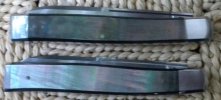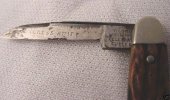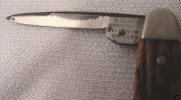I like these long pulls, they just add some class to a knife, in my opinion.
I too heard it said, it was a sign of better quality.
The longer pull also has a function, as it does assist with getting a nail, and providing the leverage in opening.
Think of fingers and hands with arthritis, for instance.
Perhaps a person hit a thumb with a hammer, or shut a kitchen utility drawer on fingers ( usually the result of a kid "helping" in the kitchen.)
What irks me, are some nail nicks are not positioned "well" to afford leverage in opening.
Not to mention having "purchase" for a nail in the first place, and I do keep in mind ladies do use slip joints as well.
Now I have seen long pulls with the serrations, these were for striking matches, and yes, they worked for striking the "strike anywhere" matches.
Another thing these would do, is smooth nails and if the nick was a long one, not only did it afford longer "strike" for a match, also for shaping or smoothing a nail against those serrations.
Serrations were classy, tasteful, still had function.
I was born in the last great decade, and recall folks using slip joints, and these features assisted them.
Veterans of Wars, the elderly and ladies.
We have an aging society and will continue to for some time. Not to mention we all can get injury to nail, fingers and wrists.
With concerns of Customs and rulings on one hand assist...
Just me, still slip joints are proven, and while I hope these concerns with Customs do not come to pass...
Vintage, is proven, and works today as well as it did in yesteryear.
Sending best,
Steve
Steve

















